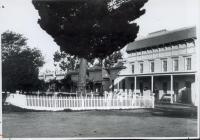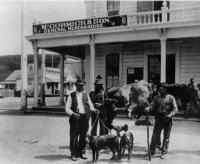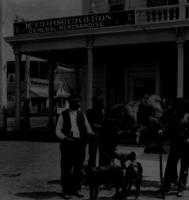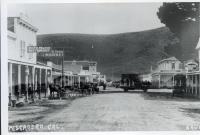In 1919 a battered and bruised Frank Goularte, the 40-year-old son of the Pescadero blacksmith, was anxious to talk to the authorities about the beating he had received from Kid Zug– the recent winner of the highly anticipated outdoor bout with “Happy” Frey, son of the village bartender and constable.
“I was on my way to a dance,” Goularte began. “Before going there I stopped at San Gregorio to get a shave and when I left the shop,” the blacksmith’s son said he was suddenly, violently assaulted by Kid Zug. He intended to bring charges against the pugilist.
When he appeared before the Justice of the Peace in Redwood City, a wounded and angry Frank Goularte charged Zug with battery. A trial date was set and the Kid appeared before a jury in November 1919.
The evidence presented at trial definitely proved that the attack had occurred–but the jury believed Zug’s version of events, citing that his actions were defensible and justifiable. They were convinced that Goularte had directed slurs at Zug and made a move that looked as if he were about to draw for a gun. Kid Zug was acquitted of all the charges.
Insiders guessed at the truth: Frank Goularte was an important witness in the murder investigation involving the death of Sarah Coburn, a wealthy Pescadero widow. He lived across the street from Sarah, and on the night of her murder, had observed the comings and goings of possible suspects. His testimony could prove to be devastating to Zug’s employer–believed to have played a pivotal role in the slaying.
Some folks in the know believed the beating Kid Zug administered to the blacksmith’s son was a clear message to Goularte to keep his mouth shut.
Perhaps Zug’s influential employer was responsible for suppressing the murder invesstigation and having the whole matter dumped into a permanent cold case file.
By 1920 few people were even talking about the murder case.
Kid Zug quietly packed up his few belongings and left the Swanton House and Pescadero forever.
The END




